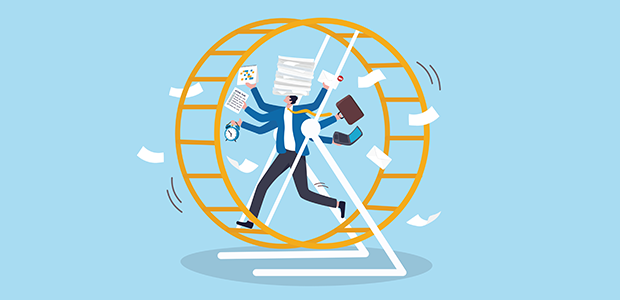
From hustle to habit: how to shift from intuition to intention
Founders get early traction through pure hustle, personal networks, charisma, and tenacity, but at some point, relying on the hustle inhibits growth.
Having worked with many growth organisations, I’ve seen that these very traits that spark growth can hold a company back when it’s time to scale.
In this article, I explore how founders recognise when they’ve hit that inflection point, when the “founder hustle” stops being enough, and what to do next to create repeatable, data-driven, investor-ready growth.
The founder hustle
Does this sound familiar? The company founder leads every sale, sources every opportunity from their voracious networking, does every demo, and closes deals with personal charm and willpower.
The payback is that the early company strategy is driven by customer and market fit, as the founder is on the coalface of the job-to-be-done for potential buyers, and deep client relationships are formed.
Even when there’s a commercial co-founder, the challenge is the same: hustle doesn’t scale.
Company founders have many priorities, not just closing new business, but the operation and scaling of the company, and then, as customers are onboarded, spoiled by the senior access they had during the sale, they start to draw on the founders' time.
Soon, this greatest early asset becomes a bottleneck and growth stalls. And as growth stalls, this most persuasive of sellers is drawn deeper into the company's operational workings, dealing with investors, righting the ship, and the company risks entering a fatal tailspin.
Signs you’ve hit the ceiling
You’ve maybe seen the signs, I certainly have in my career, they include things like:
- Deals slow down unless the founder is in the room
- The last customer requirement becomes the product roadmap
- Messaging is similarly focused on the latest short-term challenge
- The use case and the buyer's problem it solves are not defined
- The Ideal Customer Profile is whoever expresses an interest
- The CRM is your founder's contact list
- The sales process is like junior school football, with everyone running after the ball
- Key messages, demo scripts, and objection handling live in the founder's head, not in a playbook
- There is no bandwidth to focus on building awareness or a mid- to long-term marketing strategy
However gifted or visionary a founder is, or however well-intentioned they are to carry this on their own back, none of this is about talent. It’s simply the absence of a go-to-market framework.
Hustle to habit in 3 C’s
The goal is to codify this, to move from intuition to intention, from being dependent on founder smarts and energy to building a repeatable system.
My suggestion is a focus on three areas:
- Clarity: identify your Ideal Customer Profile, positioning, and messaging, and align around that
- Consistency: define your sales process, content themes, goals, and metrics
- Cadence: execute a repeatable marketing and business development process for pipeline generation, review, and optimisation
My advice is not to overdo this, to be sensitive to appetite and bandwidth for this process, and not to slow the business down by overdoing the naval-gazing workshops; instead, be pragmatic and remain focused on the most pressing task at hand to maintain business velocity.
Winners know when
Timing this right-of-passage for young companies is the tricky bit.
How soon do you introduce people, process, and technology, and start transitioning the go-to-market motion to something built for scale, without adding friction too early and stifling agility, but get these things in place before growth stalls.
McKinsey describes this as The Scale-up Conundrum, reporting that “78% of companies that have successfully built a product and found product market fit (PMF) fail to scale” because they never codified what was working.
So this timing is critical and could separate the winning startups from yet another statistic trying to recover from a tailspin.
The big payback
Aside from realising their revenue potential, building investor confidence, creating resilience, and making payroll, the big payback we’ve seen is the satisfaction of a founder creating something bigger than themselves when there is a revenue engine that works without them.
Once the revenue engine is humming, the founders can pour their energy into the reason why they formed the company, the passion for the new idea, and the change in the world they want to see. Not the process and the spreadsheets.
The hustle got the company here, but a framework will get you there.
For more startup news, check out the other articles on the website, and subscribe to the magazine for free. Listen to The Cereal Entrepreneur podcast for more interviews with entrepreneurs and big-hitters in the startup ecosystem.

